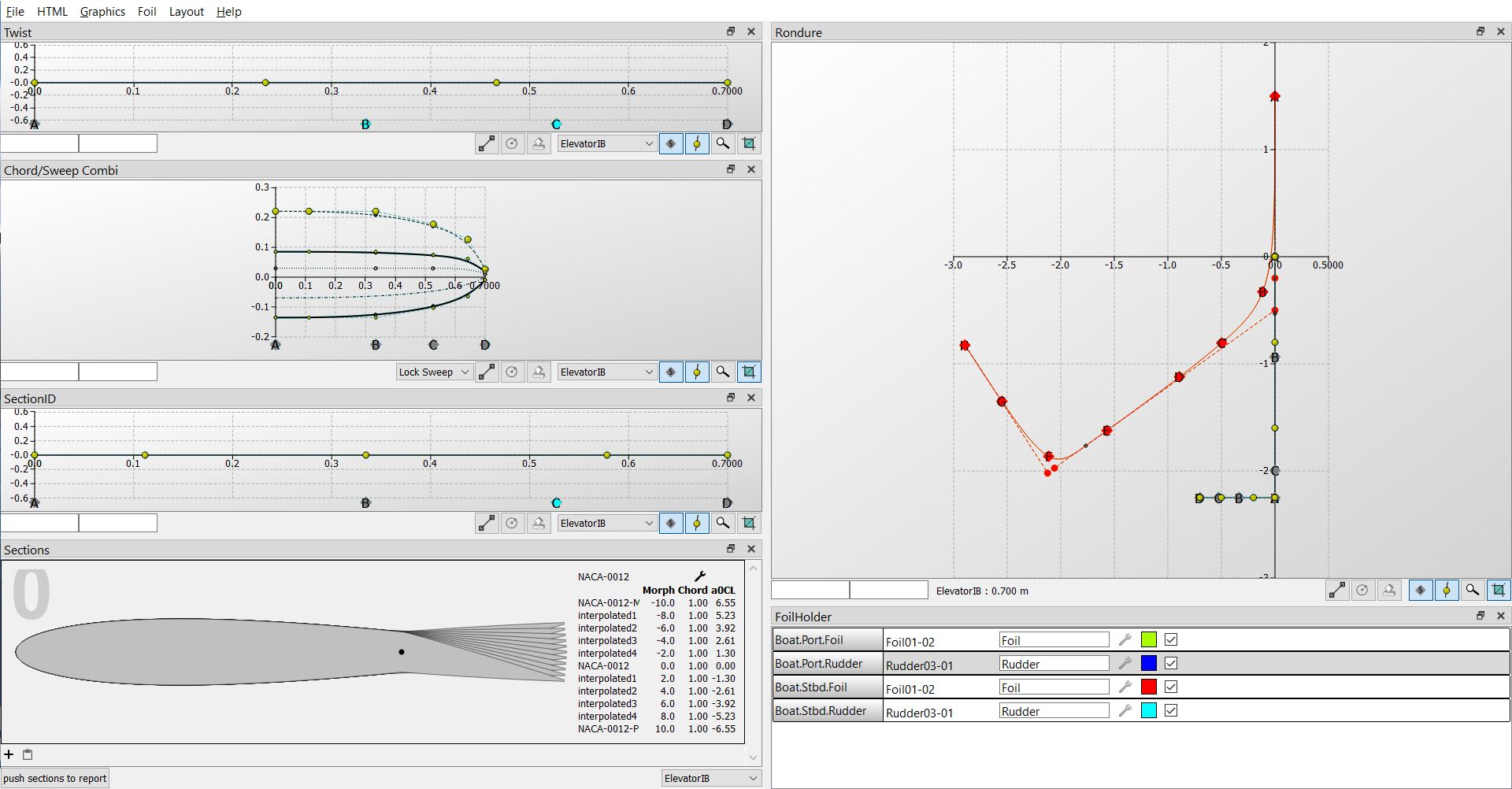Hydrodynamics
- Potential flow models
- Lifting-line method
- Incorporates polar section evaluation
- Cavitation model
- Spray drag model
- End-plating models and free-surface approximation
- Local wave orbital velocity influence
- Section shape model
- Inviscid pressure calculation
- Automated XFoil polar generation
- External data surface evaluation (e.g. RANS section data)
- Structural model
- Euler beam-bending/twist model
- Full FSI coupling to potential flow models
Design
- Spline-based GUI foil editor for any foil configuration
- Section shape editor with live pressure plot
- Single element sections, or foils with flaps
- Define ‘rondure’ (front-view) foil spline reference line
- Define and edit cross-sectional properties as function of rondure position:
- Section shape; live inviscid pressure distribution
- Polar coefficients (can be determined automatically)
- Chord, offset, twist
- EI, GJ, shear-centre (can be estimated)
Reporting
- Overall lift and drag, broken down by component
- 6-DOF forces and moments
- Lift and drag distributions along span
- Sectional pressure distributions
- Cavitation margin
- Bending moment and shear stress along span
- Peak strains
- Deformation and twist along span






